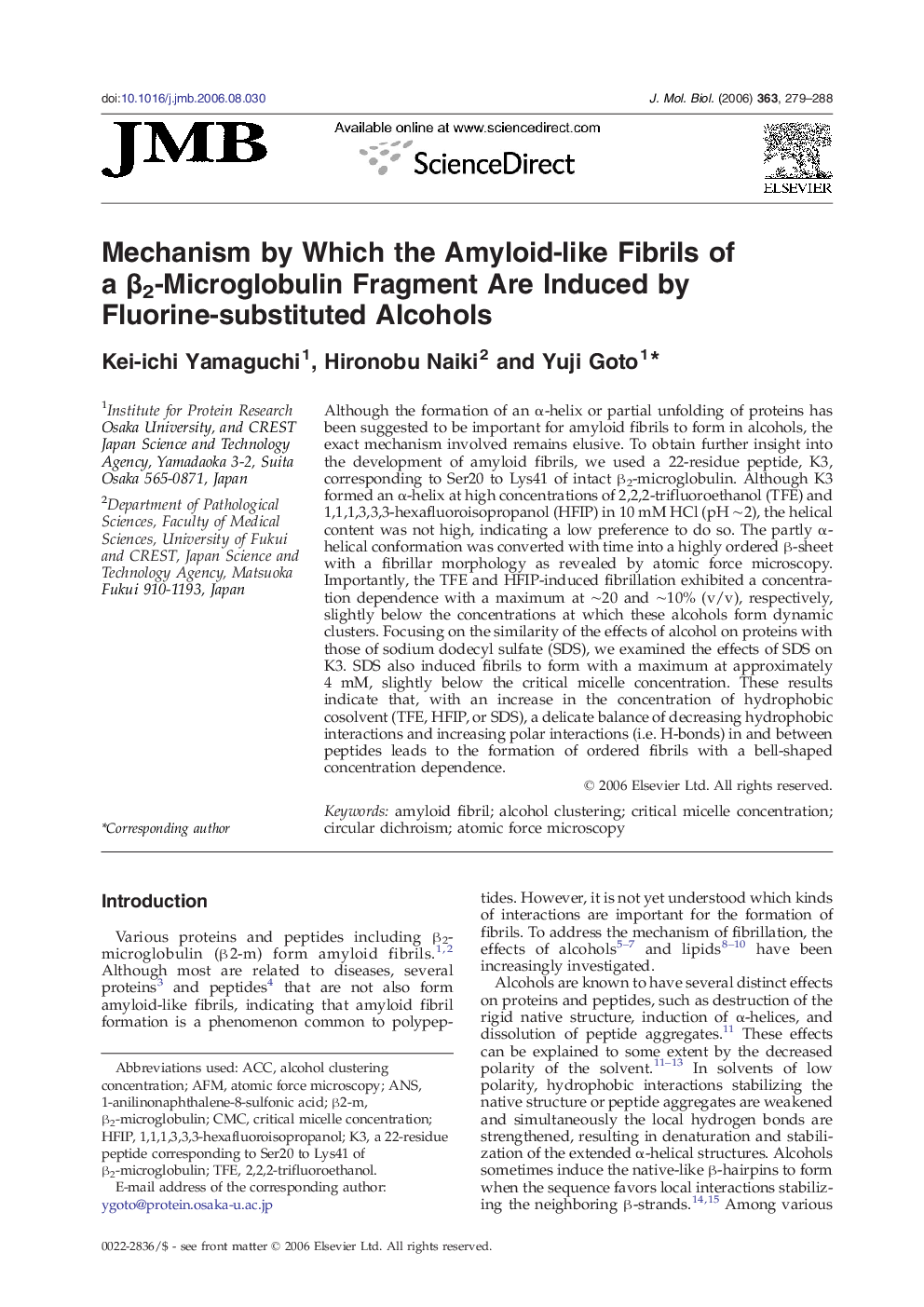| Article ID | Journal | Published Year | Pages | File Type |
|---|---|---|---|---|
| 2189030 | Journal of Molecular Biology | 2006 | 10 Pages |
Although the formation of an α-helix or partial unfolding of proteins has been suggested to be important for amyloid fibrils to form in alcohols, the exact mechanism involved remains elusive. To obtain further insight into the development of amyloid fibrils, we used a 22-residue peptide, K3, corresponding to Ser20 to Lys41 of intact β2-microglobulin. Although K3 formed an α-helix at high concentrations of 2,2,2-trifluoroethanol (TFE) and 1,1,1,3,3,3-hexafluoroisopropanol (HFIP) in 10 mM HCl (pH ∼2), the helical content was not high, indicating a low preference to do so. The partly α-helical conformation was converted with time into a highly ordered β-sheet with a fibrillar morphology as revealed by atomic force microscopy. Importantly, the TFE and HFIP-induced fibrillation exhibited a concentration dependence with a maximum at ∼20 and ∼10% (v/v), respectively, slightly below the concentrations at which these alcohols form dynamic clusters. Focusing on the similarity of the effects of alcohol on proteins with those of sodium dodecyl sulfate (SDS), we examined the effects of SDS on K3. SDS also induced fibrils to form with a maximum at approximately 4 mM, slightly below the critical micelle concentration. These results indicate that, with an increase in the concentration of hydrophobic cosolvent (TFE, HFIP, or SDS), a delicate balance of decreasing hydrophobic interactions and increasing polar interactions (i.e. H-bonds) in and between peptides leads to the formation of ordered fibrils with a bell-shaped concentration dependence.
